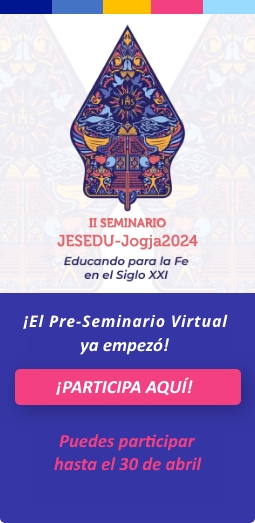The Global Citizenship Course might be the best kept secret of Educate Magis. Many of us know about Connected Classrooms and the Global Map of schools, but how many know about a course for faculty and staff designed by educators from five different continents? This multi-media course draws on resources from the United Nations and the Catholic intellectual tradition to educate people about human rights, sustainable development goals, social justice and more. And it’s all done from an Ignatian perspective.
I’ve taught theology for nearly 15 years, and I still learned quite a bit after taking the course. But more importantly, I wanted to share this great experience with my students. Only faculty and staff are eligible to take the course, so I decided to create a modified version for my high school students, especially since its use of videos, websites, and other online materials make it well suited for distance learning. I adapted the course for my sophomores since it will serve as a great transition for them in preparation for their junior year when they will be taking Ethics, but the course also works well for first-semester seniors as they embark on our Social Justice course. Since the lessons cover human rights, sustainable development goals, and responsible citizenship, they would also work well in many areas of a Social Studies curriculum, and creative teachers could probably find a way to adapt this course to still other fields as well.
I culled the most pertinent videos, websites, and other materials from the Global Citizenship Course and compiled them into a Lesson Plan and PowerPoint, follow this link to see the adapted course Global Citizenship Course for Students. The challenges of our modified schedule this month required me to compress things a bit, but my 3-day lesson could easily be extended to 5 days. Mimicking the outline from Educate Magis, I began with an overview of what global citizenship is, and I had students reflect on how well their education has prepared them for global citizenship thus far. I then introduced them to initiatives like the global map of schools and asked them to find and describe another Jesuit school in the world with our namesake (Gonzaga). Next I had them watch a video about La Silla Roja (the Red Chair Project) and also learn about the 30 human rights outlined in the U.N. Declaration of Human Rights. Day 3 was devoted to Sustainable Development Goals and Catholic Social Teaching, and if I had time for 2 more days, I intended to delve more deeply into poverty, ecology, migration, and the right to a quality education.
I strongly recommend using this course with your own students. My students were most impressed with the number of Jesuit school spread all across the world, especially so many in India, but most of all they were moved by the U.N. Declaration of Human Rights. Most had never heard of it before and were happy to know it exists. Overall, I’d say this Global Citizenship Course for Students works well for distance learning but it should also work well for face-to-face instruction once we’re able to return to our campuses.
Please feel free to expand or adapt the course for your students in light of their own context and personal development, and please share your experience with the rest of us. I’d love to see how we might adapt this course further and help it become a mainstay in Jesuit schools across the world.
Inicia sesión o Hazte miembro
para crear y ver comentarios
